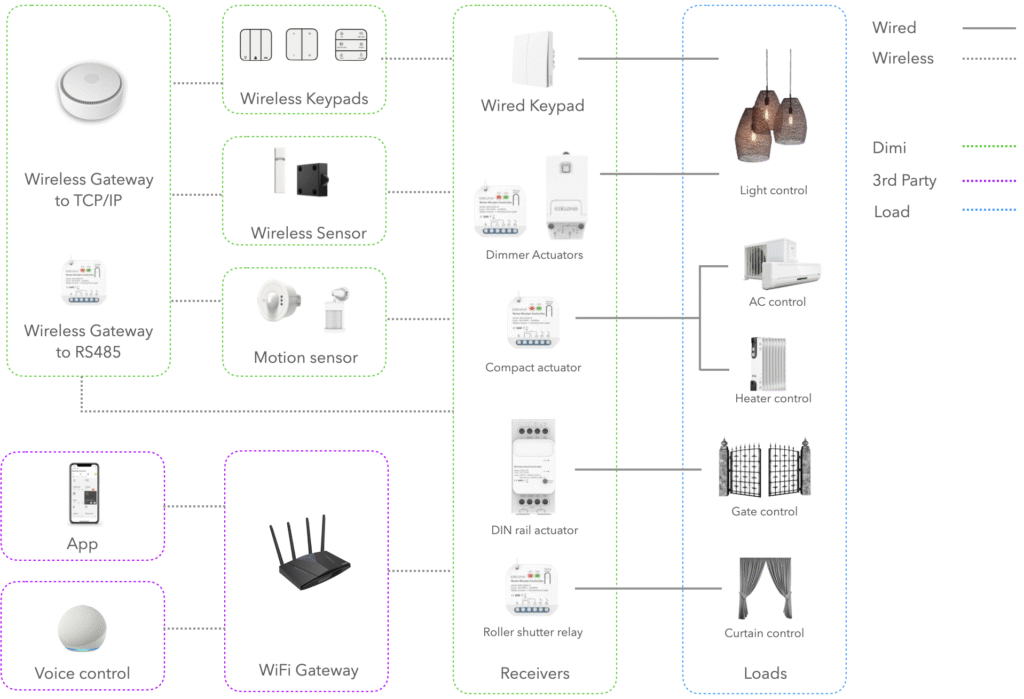< Go Back
Product
Understanding the Dimi Ecosystem: Keypads, Receivers & Sensors
Discover how our simple components work together for powerful, seamless automation.

Dimi is more than just a smart switch—it’s a complete, intelligent ecosystem designed to work in perfect harmony. Each component is engineered for simplicity, reliability, and seamless integration, allowing you to build a smart system that’s perfectly tailored to your space.
Let’s break down the three core components that make the magic happen.
- The Keypad: Your Command Center
The Dimi Keypad is the part of the system you interact with every day. But it’s far from ordinary.
- How it Works: It’s completely wireless and battery-free. When you press a button, it harvests that kinetic energy to send a wireless command.
- Its Role: To give you instant, manual control from anywhere. You can place it on any wall, table, or surface you like. Think of it as the ultimate smart remote for your space.
- The Receiver: The Brains of the Operation
Tucked away invisibly behind a light fixture or near an appliance, the Receiver is the workhorse of the ecosystem.
- How it Works: The Receiver is wired to the device you want to control (like a light or motorized curtain). It listens for wireless signals from your Keypads, Sensors, or app.
- Its Role: To execute commands. When it receives a signal to “turn on,” “dim to 50%,” or “close,” it delivers the power and instruction to make it happen.
- The Sensor: The Automation Expert
Sensors are what elevate your system from “remote controlled” to “truly smart.”
- How it Works: Like our keypads, Dimi sensors are wireless, detecting things like motion, presence, or whether a door is open or closed.
- Its Role: To trigger actions automatically. A motion sensor can turn on the hallway lights when you walk by. A door sensor can turn off the AC when a window is left open. They make your space responsive and efficient.
Together, these three components create a powerful, scalable, and reliable network. You can start with a simple keypad and receiver for a single light, and expand over time to automate an entire home or commercial building—all built on the same simple, sustainable foundation.
Ready to build your own smart ecosystem?
